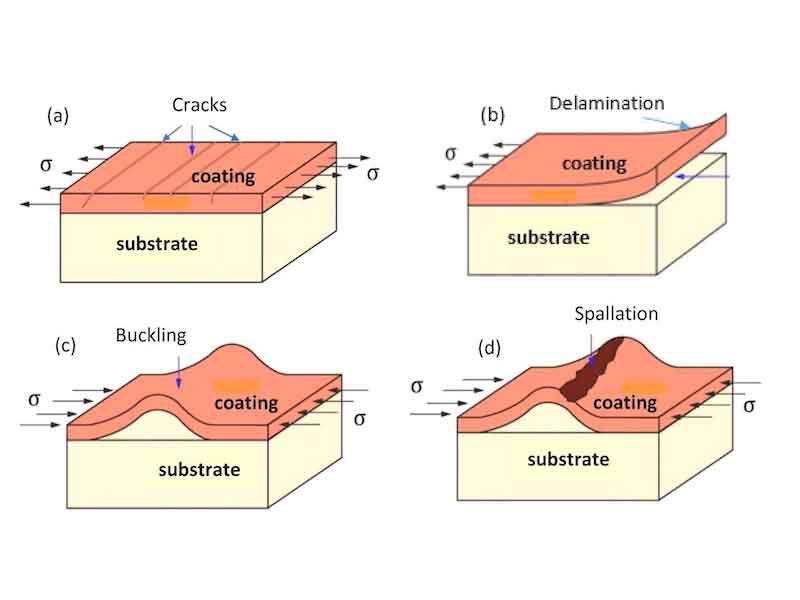The residual stress generated after thin layer TiN coating by Physical Vapor Deposition is reducing the mechanical and tribological properties of TiN.
Thermal stresses are one of the residual stress components which can cause failure modes of proper coatings. In this article, a validated computational simulation was developed to investigate the effect of physical and thermal properties on the thermal stresses of the coating, including the deposition temperature, Young’s modulus of coating, the thermal expansion coefficient of coating, and the thicknesses of coating and substrate.
An analytical method using Stoney & Tsui model was used to verify the simulation result by Abaqus software 6.14–5, and very good agreement was achieved. Results show that the thermal stress distribution is discontinued large difference between high stresses in the coating and low stress in the substrate. Also, increasing the deposition temperature from 100 oC to 500 oC increases the thermal stresses from 214 MPa to 1355 MPa linearly.
Analysis of the coating thickness in the range of 1–5 μm slightly reduces the thermal stress from 1362 MPa to 1342 MPa, while an increase of the substrate thickness in the range of 1–5 mm increases the thermal stress from 1330 MPa to 1360 MPa. It is also realized that an increase in Young’s modulus of TiN from 250 GPa to 600 GPa linearly increases the thermal stress from 567 MPa to 1355 MPa, while an increase of the coefficient of thermal expansion of TiN from 3.92×10− 6 ◦C− 1 to 9.40 × 10− 6 ◦C− 1 reduces the thermal stress from 3418 MPa to 1355 MPa.
To read the full article, please visit https://www.sciencedirect.com/science/article/pii/S2666359721000330






























